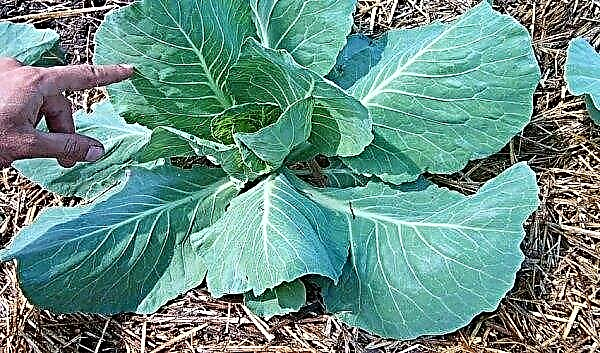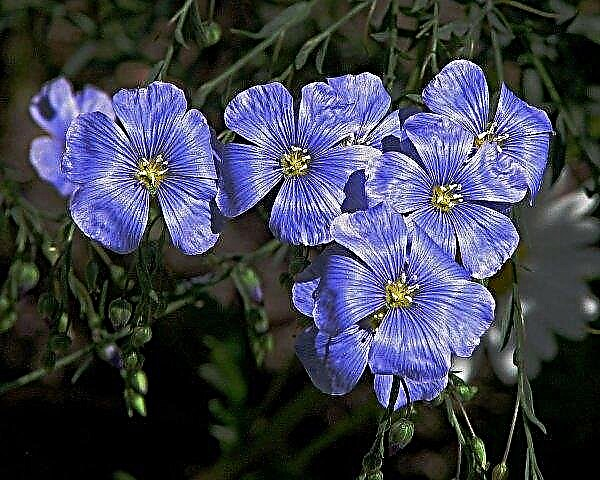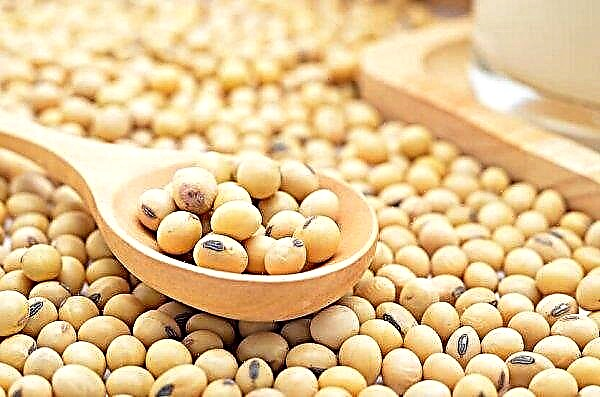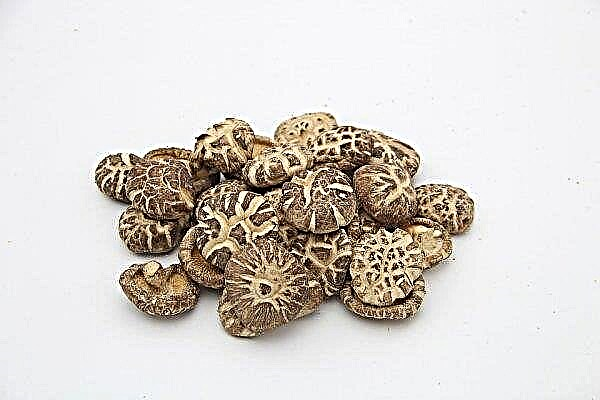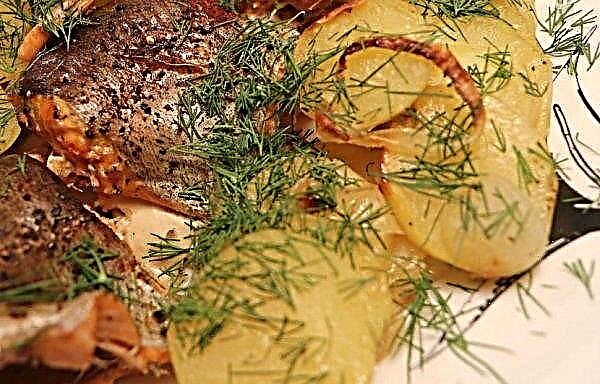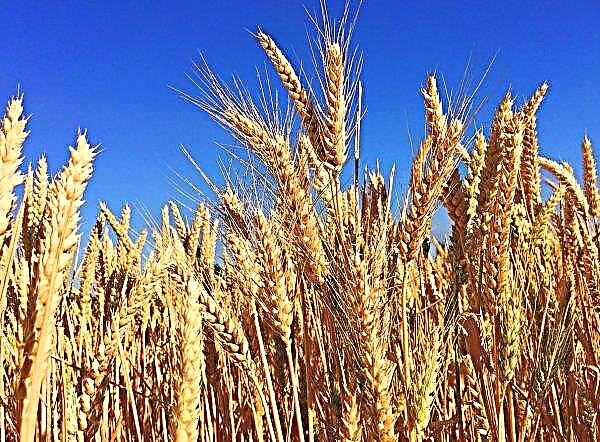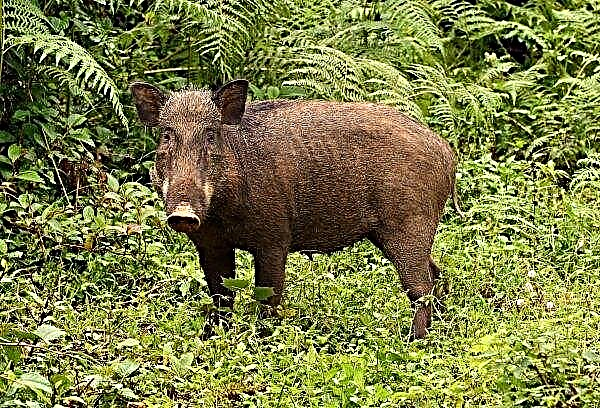Winter wheat differs from the spring variety in several advantages - the ability to grow it in places with different climate conditions, as well as high yield. According to the observation of agronomists, the biological potential of this variety is a quarter higher than that of the spring form. One of the successful varieties of winter wheat is Tanya, which recently appeared on the expanses of agronomy. It will be discussed in the article.
Appearance story
The variety was created in the Krasnodar Research Institute of Agriculture named after P.P. Lukyanenko and submitted for testing in 2001. Included in the register of achievements since 2005. From a hybrid combination, selection was carried out three times, using the method of crossing triticale with wheat. Protected by a patent of the Russian Federation.
Description
Variety Tanya - semi-dwarf, slightly higher than the grade Skifyanka, is resistant to lodging. An ear in shape resembles a cylinder or a pyramid of medium density and length. Spiky scales and ovoid-shaped grains. Large seeds - weight 1000 pcs. It is about 45.4 g. This variety is very appreciated, as it is resistant to shedding, yellow and brown rust, spike disease.
Characteristics
Variety of soft winter wheat Tanya, is high-yielding and resistant to weather conditions, rarely gets sick. It survives frosty weather and is resistant to drought. The Tanya variety is widespread in different parts of the world as a cash crop, because it has many positive characteristics: it gives good results in different weather conditions, the plant shows an excellent yield per unit area, and it also produces high-quality flour, which is used to create various bakery products.
Did you know? The first cultivated cereal is wheat. She began to grow back in the Neolithic revolution.
Productivity
The grains are large, egg-shaped. The average value of productivity per 1 ha reaches 97 centners, the minimum - 45 centners / g. Yields in different regions may vary. It is influenced by weather and climatic conditions, especially the preparation and tillage.
Grain quality
Grain in quality meets all the requirements for soft varieties. Quality largely depends on the period of fertilizer application. Agronomists recommend fertilizing at a later stage of organogenesis.
Growth Requirements
Among the main growing requirements are:
- heat and light;
- humidity;
- soil preparation;
- fertilizer.
The winter wheat variety Tanya needs a long day. For different vegetation periods, unequal heat indicators are required. Thanks to its frost-resistant characteristics, grains can sprout even at + 1 ° C, but a higher temperature is needed for mass growth. The first shoots appear about a week after sowing, if the air temperature is from + 14 ° C to + 16 ° C. Further, in the next 30–40 days, if the air temperature is from + 11 ° С to + 16 ° С, tillering occurs.
Winter wheat is demanding on the soil. It should be distinguished by nutritional properties, a favorable composition of water and physical substances. In order for the plant to harden, it is important to sow it at the optimum time, to provide wheat with sufficient potassium and phosphorus. The first hardening cycle occurs in the autumn-winter period.
Did you know? The Slavs considered wheat a symbol of wealth and the life cycle. She served as a strong amulet that protects from the evil eye and damage.
For full seedlings, productive soil moisture should be at least 1 cm. In the tillering phase, the coefficient of productive moisture must be at least 30 mm. The greatest amount of moisture is lost by the plant during the period from regrowth in spring to heading.
Wheat Tanya already in the first days of the descent requires nitrogen as a food. The substance is necessary for her before the appearance of grain. In addition, she needs the consumption of phosphorus and potassium in different periods - from going into the tube to the formation of an ear and flowering.
Growing rules
A good crop can not be expected if the soil is poorly prepared - wheat is moody to its predecessors. The best of them are annual or perennial herbs such as buckwheat, corn, legumes, and rape. Also, wheat is well "related" to oats. It well saturates the soil with nutrients, is resistant to root rot infection.
Soil preparation
When preparing the soil for sowing, it is worth considering the main requirements:
- Residues from the previous plant should be well repaired.
- Weeds need to be destroyed.
- Saturate the soil with moisture and ensure proper aeration.

Soil cultivation before sowing directly depends on weather and climatic conditions, working equipment, arable land. Most often, the preparation is carried out using a harrow and cultivator, to reduce to zero the presence of large lumps of land on the field. The field before sowing should be flat. Immediately after all technical and agronomic work, plowing of the land is carried out.
Important! The technique should go deeper by 20 cm to prevent weed growth.
Duration and seeding rates
The sowing rate is 5 million grains per 1 ha.
The optimal period can be determined, taking into account several factors:
- precursor plant;
- region and amount of moisture;
- weather.

Sowing time may vary, as much depends on the weather and soil conditions. A good period for this is the second half of September. If the land is sparse, sowing can be done even in early September, and as for rich soil, sowing takes place closer to winter - this will prevent the early germination of the plant and the attack of insects.
Usually, winter wheat should already have sprouts, but not all, only a few sprouts from the bush. Grains are deepened by 3 cm, compacting the soil with rollers. Depth may vary, since a lot depends on the timing of sowing. Winter wheat is sown in rows, the width between which is 15 cm.Important! If the time has come for sowing, and the soil is not wet enough, you should increase the seeding rate by 10% and reduce the depth of planting seeds by 3 cm.
Fertilizer application
Most crops respond positively to the fertilizer process - this also applies to winter wheat. High yields are observed when fertilizing the soil with phosphorus, nitrogen, potassium. For example, 30 kg of wheat requires 90 kg of nitrogen, 25 kg of phosphorus, 60 kg of potassium. The frequency of application of substances depends on the growing season of wheat. In the early days, cereal requires a small amount of nitrogen. But already during the formation of the ear and stems, this dose needs to be increased.
When grains appear, this element is excluded, since excessive fertilizer will provoke a low rate of grain growth. Wheat needs phosphorus in the bush formation phase. Such an element helps the plant strengthen the root system, maximize the development of ears.
Wheat will not yield a high yield from a lack of potassium, since the heading process depends on this fertilizer. Potassium helps the plant withstand diseases, and also has a positive effect on the size of the seeds, provokes an accelerated delivery of carbohydrates to grains, which helps them to fill up faster and increase.
Wheat flour products are popular in many countries of the world; people need plant varieties that will guarantee successful cultivation. The creation of the Tanya variety was a good decision. Therefore, in our country, its continuous cultivation and constant supply to various countries is carried out.

